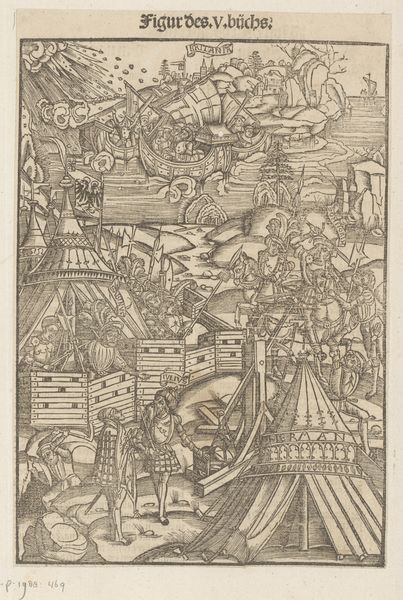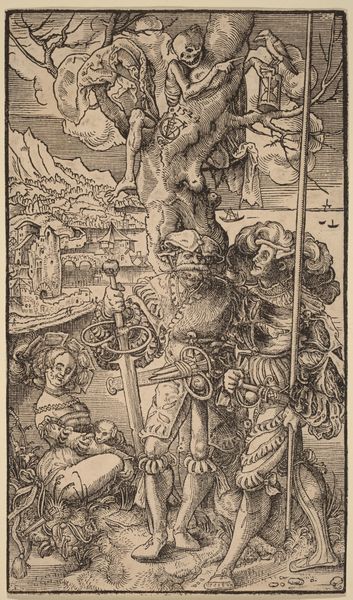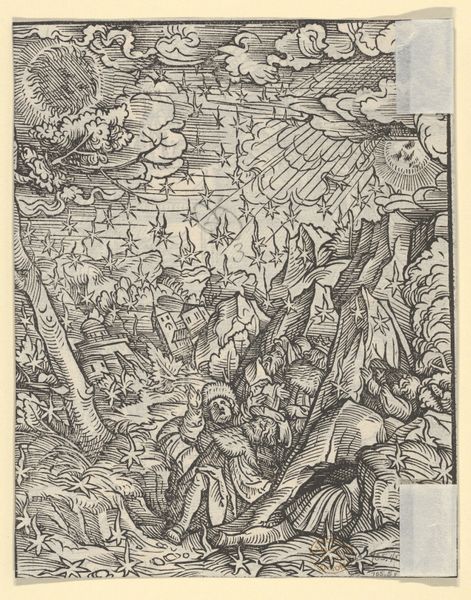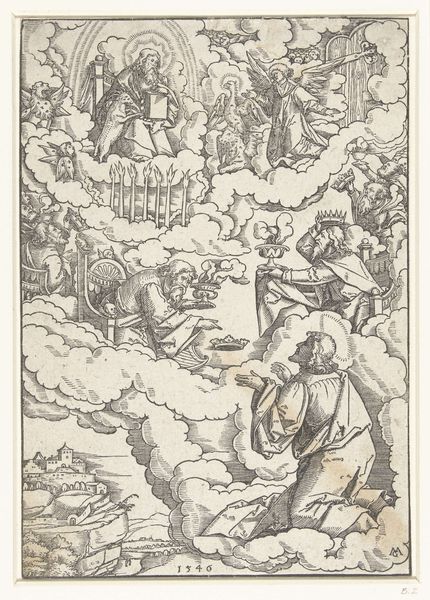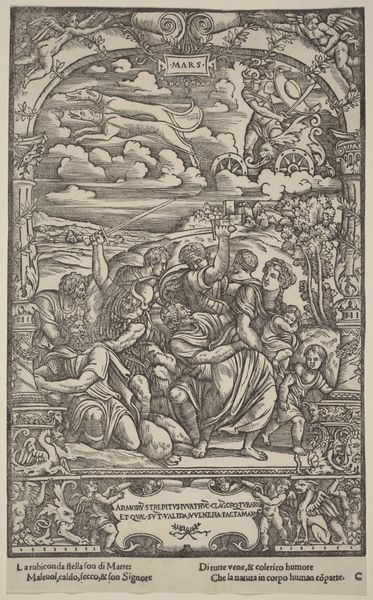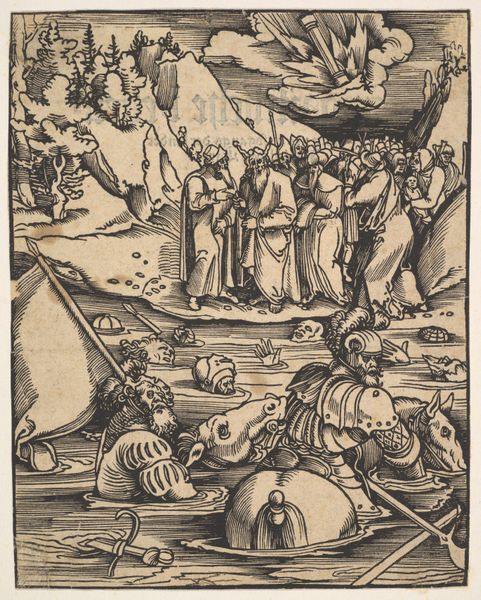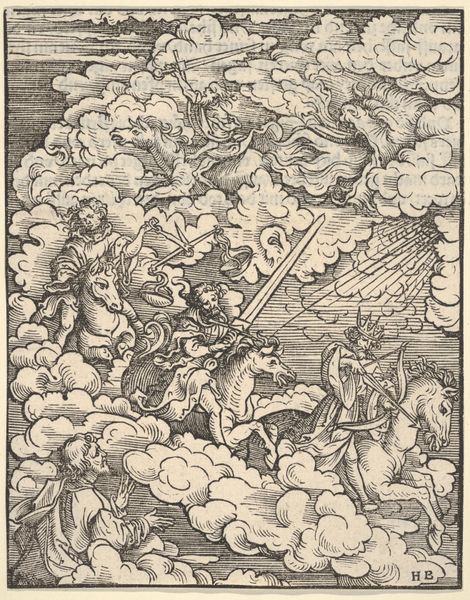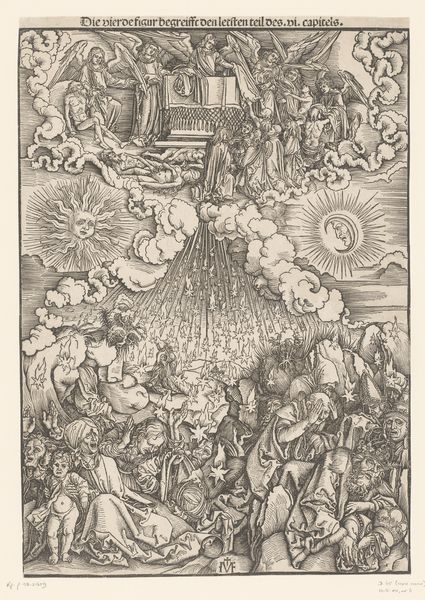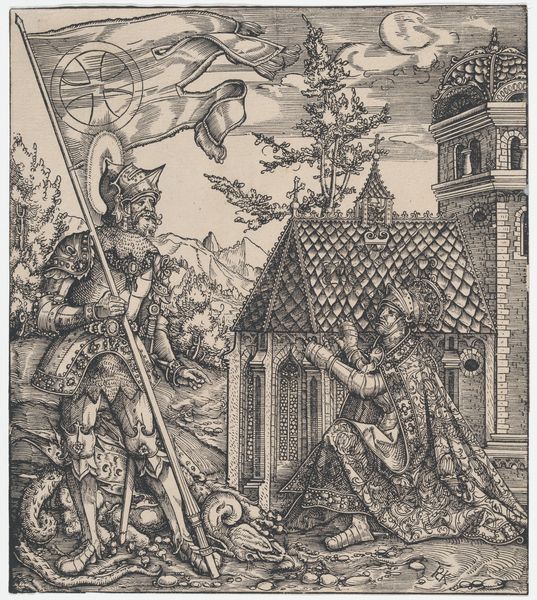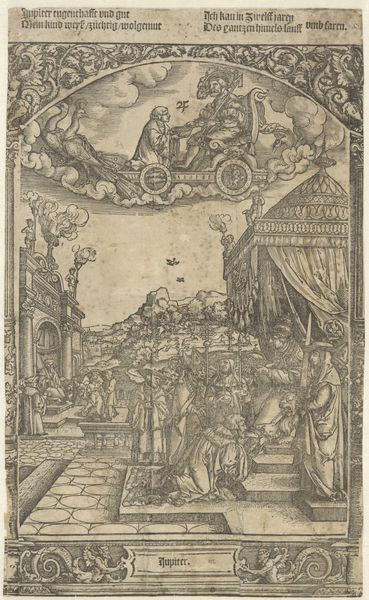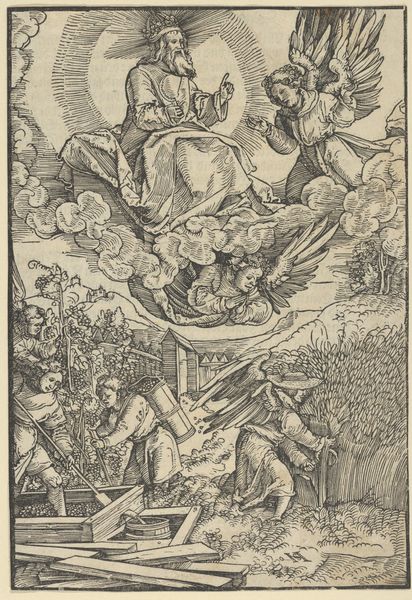
The First Four Trombones, from The Apocalypse 1523 - 1524
0:00
0:00
drawing, print, ink, woodcut
#
drawing
#
narrative-art
# print
#
ink
#
woodcut
#
line
#
history-painting
#
northern-renaissance
Dimensions: Sheet: 6 3/8 × 5 1/8 in. (16.2 × 13 cm)
Copyright: Public Domain
Curator: Immediately striking is the dynamic, almost frenetic energy packed into this small woodcut print. So much happening at once! Editor: Indeed. Let’s contextualize what we are observing. This is "The First Four Trombones, from The Apocalypse" created by Hans Burgkmair around 1523-1524. As the title suggests, it's one in a series depicting the Book of Revelation. Curator: The visual language here is potent. You have the heavenly host blasting those instruments, these trombones as you mention, but the imagery is almost violently loud with details; monsters writhing, fiery skies… Editor: Precisely, consider the symbolic resonance of trombones in the 16th century. They weren't just instruments but harbingers of pronouncements and in civic life, announcements. Burgkmair cleverly leverages their culturally embedded association with authority and decree here to visualize divine judgment. The dragon being smitten represents primordial chaos succumbing to God's wrath. Curator: The woodcut technique itself lends a certain starkness that amplifies the severity of the scene, wouldn’t you agree? Editor: I concur. Burgkmair's stark line work definitely intensifies the drama, reflecting anxieties prevalent during the Reformation. Print became an extremely democratic vehicle to display the concerns and unrest. The symbolic violence is the key point to showcase the period struggles, where religious, social, and political norms felt upended. Curator: It’s intriguing how artists in that era adapted imagery to reflect and engage with pressing societal issues. One sees clear signs that the Reformation period allowed the expansion of the Arts in terms of public reach and new subject themes, in some cases driven by specific social change supporters. Editor: Precisely! It is interesting how he has captured a moment so full of doom with the bold lines and iconography, the picture is full of symbolism and metaphor. The choice of scene and medium seems a product of not just artistic choices, but political ones, too. Curator: A stimulating combination of musical symbolism and impactful technique working hand in hand. Editor: Yes, I come away considering both the timeless, archetypal struggle between good and evil, and also the very specific moment that generated its creation.
Comments
No comments
Be the first to comment and join the conversation on the ultimate creative platform.

